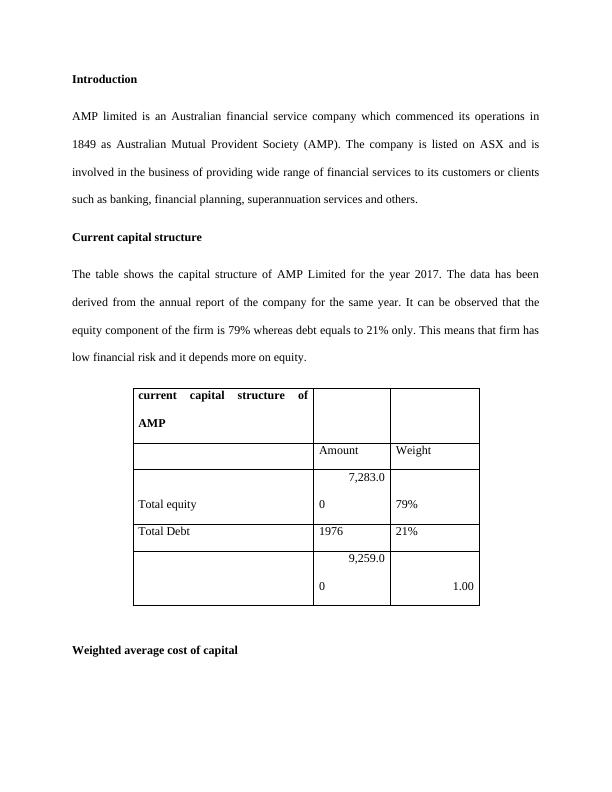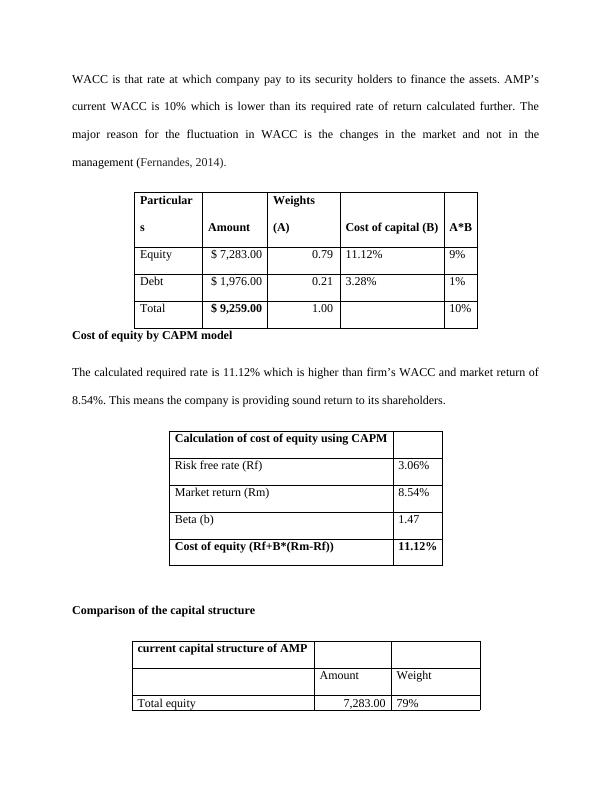Analysis of AMP Limited's Capital Structure and Risk Management
Added on 2023-06-04
8 Pages1502 Words446 Views
End of preview
Want to access all the pages? Upload your documents or become a member.
Capital structure analysis of AMP Limited
|8
|1537
|500
Capital Structure and Risk Management Analysis of AMP Limited
|11
|1572
|361
Capital Structure and Ratio Analysis of AMP Limited
|10
|1669
|73
Project Report: Accounting and Finance
|11
|1731
|144
Determining Capital Structure and Weighted Average Cost of Capital (WACC)
|5
|1146
|111
Differences Between Leasing and Borrowing
|7
|1376
|249



